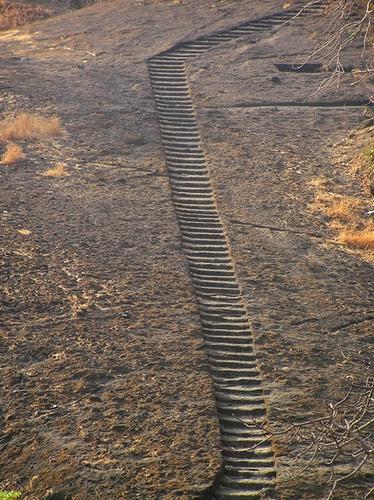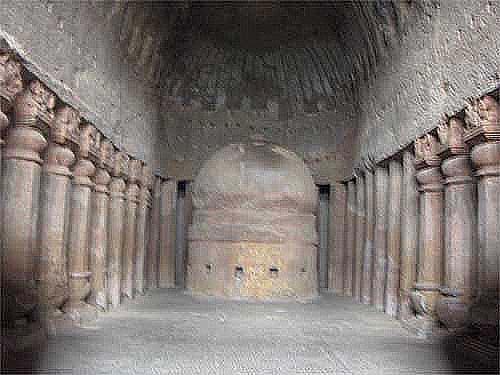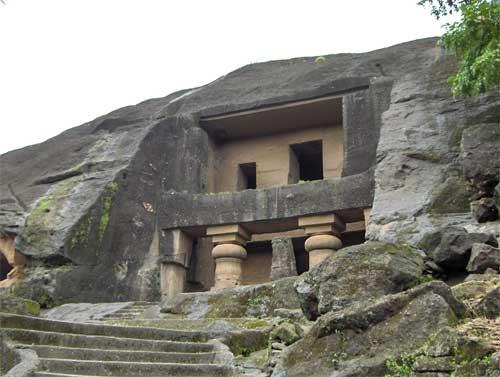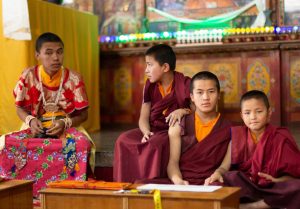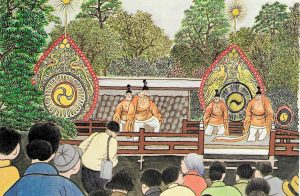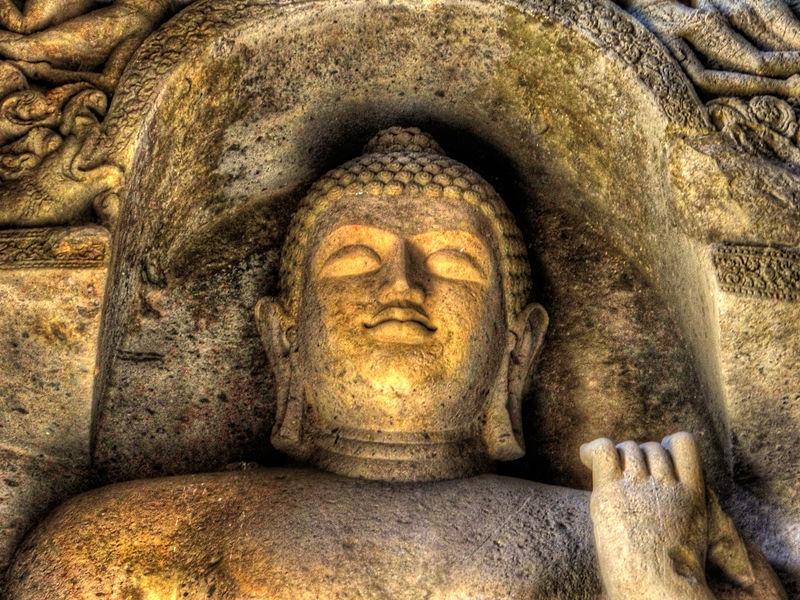
Mumbai, the country’s largest city and its commercial capital, is a captivating contradiction—at once the epitome of urban beauty in modern India, yet home to sprawling slums of dire poverty. The city possesses a rich intellectual culture and a vibrant arts scene, making this chaotic metropolis of astonishing social, religious, and ethnic diversity all the more fascinating. The Greater Mumbai Metropolitan Region is also home to several notable Buddhist monuments, including the Global Vipassana Pagoda near Gorai and the Kanheri Caves on Mumbai’s outskirts, which add to the city’s appeal. One of the airiest spots in Mumbai, the Kanheri Caves complex is an oasis of greenery offering a welcome dose of serenity to counter the noise, pollution, and bustle of metropolitan life.
Located within the lush forests of Sanjay Gandhi National Park at Borivali, the Kanheri Caves comprise a large basaltic rock outcrop into which 109 caves have been cut, dating from the 1st century BCE to the 10th century CE. The word “Kanheri” comes from the Sanskrit term Krishnagiri, meaning “black mountain,” and at 1,550 feet above sea level the complex provides a scenic vista of the Arabian Sea and the Global Vipassana Pagoda. The hill lies on what was once a trade route from the ancient port town of Sopara, capital of Aparanta, a region of ancient India. The port is now Nala Sopara and one of Mumbai’s busiest suburbs.
In 1882, an ancient Buddhist stupa was discovered in this area, from which a large stone coffer was excavated containing eight bronze images of the bodhisattva Maitreya from the 8th–9th century. The coffer also contained caskets of copper, silver, and crystal, which are now on view in the Asiatic Society of Mumbai’s museum. It is thought that Buddhists first arrived in western India at Sopara, which is close to the caves. The linked trade centers of Nashik, Kalyan, Paithan, and Ujjain also played a vital role in shaping the culture of Maharashtra State and in the establishment of the Kanheri Caves.
According to the Archaeological Survey of India, four types of structure have been excavated: chaitya-griha, or assembly halls; vihara, or monasteries; podhi, or water cisterns; and rock-cut benches and seats. The chaitya-griha are larger caves containing massive stone pillars and stupas, where monks and lay followers gathered for prayer. The vihara are made up of rock-cut cells in the side of the hill, each containing a stone plinth that served as a bed. The smaller caves could also serve as a simple inn for travelers. It is widely accepted that the excavation of the caves began around the 2nd century BCE. Initially, the caves were mostly small, consisting of a porch leading to a hall. However, the caves were extensively remodeled during the 1st century CE. Windows cut into the huge caves provide natural light. At the entrance to most of the caves is carved an inventive system to trap and store rainwater for daily use. A dam was also constructed to ensure water was available during summer, and at the top of the hill is a place known as Gaumukha, where natural spring water was collected.

By the 3rd century, the Kanheri Caves had become an important Buddhist institution for congregational practice, study, and meditation, and were considered a Buddhist educational center. The renowned Buddhist teacher Atisha Dipankara (980–1053) stayed here and studied Buddhism under Master Rahulagupta.
The first cave in the complex is an unfinished chaitya-griha. It was originally intended to have two levels but the plan was dropped, probably due to a structural defect in the rock. The second cave is a large assembly hall that features three stupas. The largest and most remarkable of all the caves, Cave 3, is the most visited and documented. It was shaped between the late 2nd century and the 6th century, and is adorned with two 23-foot standing Buddha sculptures on either side of the entrance porch. The main hall is 92 feet long and more than 42 feet wide, with 34 columns decorated with kneeling elephants, and a 16-foot stupa. Cave 4 is the oldest excavation at the site. An inscription dedicates the cave to Venerable Dharmapala as a gift from Sivapalitanika, who was the wife of the goldsmith Dhamanaka. Caves 5 and 6 are water cisterns. An inscription above them states that they were a gift from a minister named Sateraka. The inscription also mentions the queen of King Vashisthiputra Satakarni (r. 130–60), who was descended from the line of Karddamaka kings and the daughter of Mahakshatrapa Rudradaman.
Cave 11, known as Darbar Hall, is one of the largest at the site. It consists of a huge hall with a front porch, a shrine at the back, and cells on two sides. Four inscriptions have been found in the cave dating from different periods; one is dated 853 CE, in the reign of the Rashtrakuta dynasty king Amoghavarsha and his feudatory, the Silahara prince Kapardin. The inscription records the donations of various gifts and funds provided for the purchase of books and to repair damage. A Buddha statue in the dharmachakrapravartana mudra adorns the shrine. Cave 34 is a dark cell with Buddhist paintings on the ceiling. Cave 41 enshrines an 11-headed image of the bodhisattva Avalokiteshvara, the only image of this form of the deity in India. Cave 67 is a huge cell and features another statue of Avalokiteshvara. Images depicting the miracles of the historical Buddha, Shakyamuni, can also be found in this cave, as well as scenes from the Jataka tales, such as that of Dipankara Buddha.
Altogether, 51 inscriptions and 26 epigraphs have been found in the Kanheri Caves, in the Brahmi, Devanagari, and Pahlavi scripts. Three inscriptions in Pahlavi found in Cave 90 were left by Persian travelers who visited Kanheri twice—in 1009 and in 1021, indicating that Kanheri was well known in the 11th century.
Like the Buddhist caves at Ajanta and Ellora in the same state, the Kanheri Caves are a prime example of Indian Buddhist sculpture and architectural styles. The sculptural embellishments include representations of various Buddhas and bodhisattvas, although the Kanheri Caves are less elaborate than those at Ajanta and Ellora. In terms of the sheer number of caves in a single hill, Kanheri is the largest such Buddhist site in India, and a unique monument that has withstood the many trials and tribulations marking the advent and decline of Buddhism in India.
See more
Kanheri Caves (Archaeological Survey of India)
Kanheri Cave Complex—Part 1 (Indian History and Architecture)
Kanheri Cave Complex—Part 2 (Indian History and Architecture)
Kanheri Caves, Maharashtra (Buddhist Tourism)


